John Dean Adams
John Dean Adams Power Plant
- The generators were located in Power Houses #1 and #2, not the Transformer House. The Transformer House could never have contained generators, as it was not the hydro canal, had no source of water, was not of the “deep pit” design, and was not connected to the discharge tunnel.
- As the name implied, the Transformer House contained the 10 transformers (5 Scott-T banks) that interfaced the 20 generators in the Power Houses to the transmission line to Buffalo.
- Due to its distance above the falls and low efficiency, the facility was shut down in 1924, when the more efficient Schoellkopf 3-C came on line. The utility stated this fact in a 1937 court case, where the court ruled that Adams was to remain shut down. It also remained unstaffed thereafter. Anything that needed to be done at the facility, was performed by a truck-based “Traveling Operator,” one of whom was my father.
- The hardware was scrapped sometime around 1940, leaving Power Houses #1 and #2 empty, until they were demolished in the 1964. The Transformer House was repurposed to house machines belonging to another company and operated by the Niagara Mohawk Power Company. The Transformer House was then purchased for $3 million, for the purpose of a future museum. It was subsequently sold for a lesser amount and exists to this day as a warehouse.
- Adams and most of the other old power plants generated 25 Hz electricity, which could not have been replaced by 60 Hz power from the new Robert Moses plant, which came on line in 1961. The only power plant to shut down in 1961 was Schoellkopf 3-A, which had been repaired after the 1956 disaster. John Birch Rankin Station in Canada generated 25 Hz power and remained in operation until 2006.
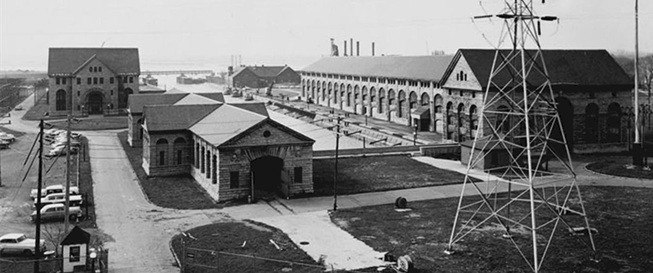
Center, front: Transformer House
Right: Power House #1 (1895)
Adams Power Plant, Street View
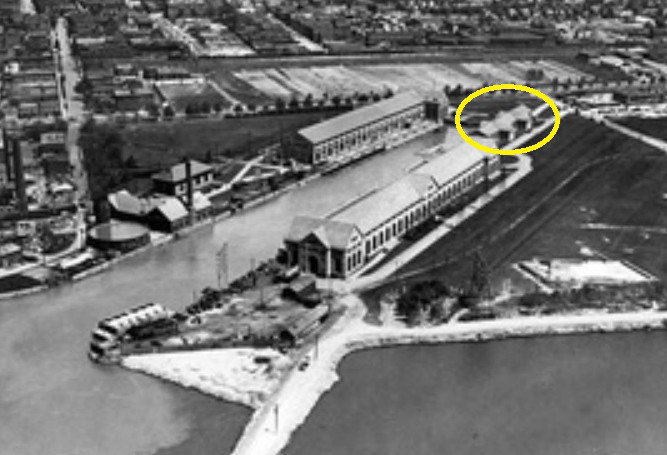
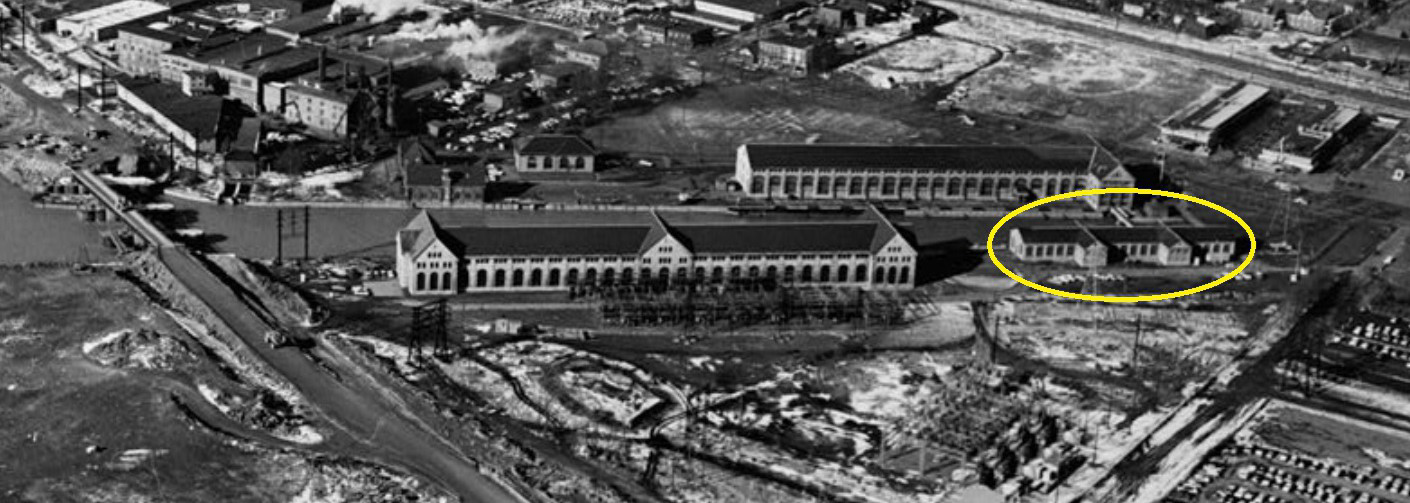
Each of the two Power Houses contained 10 generators, a total of 20 generators, although one reference states that there was a total of 21 generators. They were rated at 5,000 Horsepower each and generated 2-phase electricity at 25 Hz and 2,200 Volts. At the time, 2-phase power was all that was understood in the U.S.. However, Charles Proteus Steinmetz pioneered 3-phase power in Europe and he and Tesla decided on 3-phase transmission of power to Buffalo. The transition from 2-phase, 2,200 Volts to 3- phase, 11,000 Volts and, later, 22,000 Volts was performed by the 10 transformers in the Transformer House. They were configured as five Scott-T (https://en.wikipedia.org/wiki/Scott-T_transformer) banks, each capable handling the output of four generators. Interestingly, when the 3-phase power arrived as Buffalo, they didn’t know what to do with it. So, they converted it back to 2-phase power.
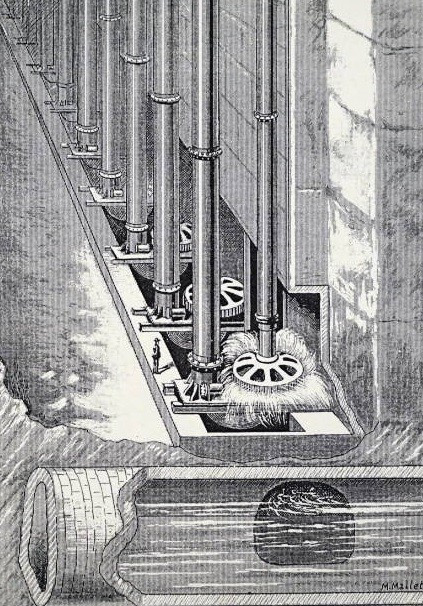
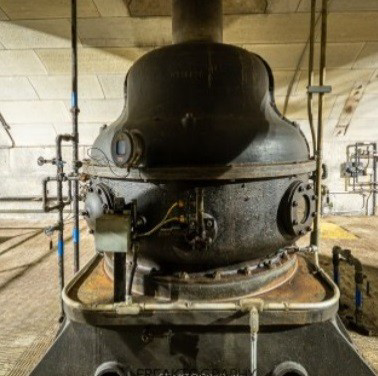
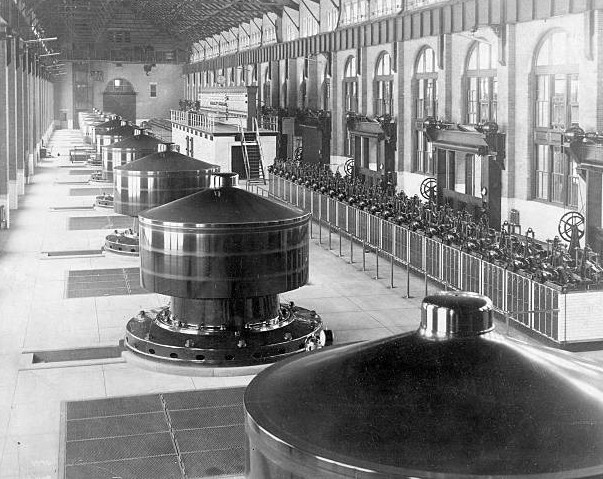

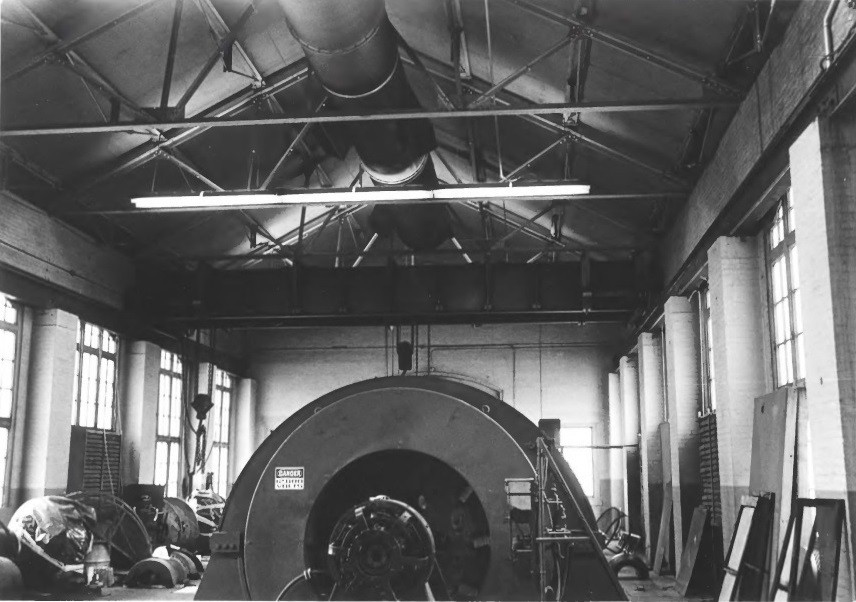
- There are statements in the literature claiming that Adams was reactivated in 1941, in support of the WW-II effort. If this is the case, the scrapping of the equipment would be later than the 1940 date, mentioned above. This remains an open question, as it predates both my birth and my father's employment with the company as a generator operator. The reference claiming that Adams was reactivated in 1941 also states that it operated until 1961, which is definitely false.
- There are conflicting statements in the literature as to whether Adams was reactivated after the collapse of the Schoellkopf Power Plant on June 7, 1956 and the loss of a major source of 25 Hz power. However, this was definitely not the case, according to my personal knowledge and the fact that no water was seen exiting the discharge tunnel. Adams was mentioned as a source of 25 Hz power after the collapse, but that source would have been the frequency changers in the Transformer House, rather than the generators.
- Note: Both the Toronto Power and Ontario Power facilities in Canada were reactivated after the collapse of the Schoellkopf Power Plant. Toronto Power shut down for good in 1974 and Ontario Power shut down in 1997, as customers were transitioned to the 60 Hz grid.

